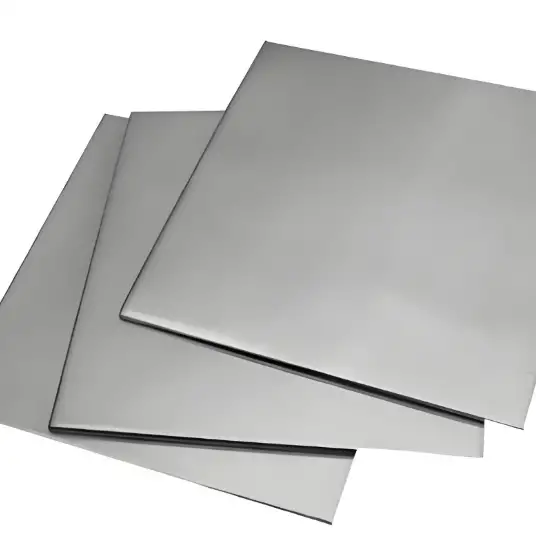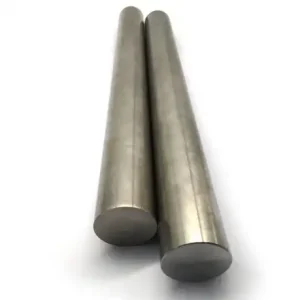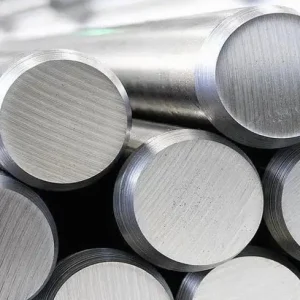MWalloys stands as your premier supplier for nickel alloy plates, offering comprehensive solutions across all grades with customized manufacturing capabilities. Our extensive inventory encompasses standard and specialty compositions, engineered to meet demanding industrial applications worldwide. From aerospace components to chemical processing equipment, our nickel alloy plates deliver exceptional performance under extreme conditions, backed by decades of metallurgical expertise and quality assurance protocols.
What is Nickel Alloy Plates?
Nickel alloy plates represent sophisticated metallic compositions where nickel serves as the primary element, typically comprising 30-75% of the total composition. These engineered materials combine nickel with various alloying elements including chromium, molybdenum, iron, copper, and titanium to achieve specific performance characteristics.
The manufacturing process involves precision melting, controlled solidification, and thermomechanical processing to achieve desired microstructures. Modern production techniques ensure consistent chemical composition throughout the plate thickness, eliminating segregation issues common in earlier manufacturing methods.
These materials exhibit exceptional resistance to oxidation, corrosion, and high-temperature degradation. The unique atomic structure of nickel provides inherent stability, while alloying additions enhance specific properties such as strength, ductility, or environmental resistance.
Industrial applications span from power generation systems to marine environments, where conventional materials fail to provide adequate service life. The versatility of nickel alloys allows engineers to select compositions optimized for specific operating conditions.
What is the Chemical Composition of Nickel Alloy Plates?
Chemical composition directly influences the performance characteristics of nickel alloy plates. Each element contributes specific properties, creating synergistic effects that enhance overall material behavior.
| Alloy Grade | Ni (%) | Cr (%) | Mo (%) | Fe (%) | Cu (%) | Ti (%) | Al (%) | Other Elements |
|---|---|---|---|---|---|---|---|---|
| Inconel 625 | 58-63 | 20-23 | 8-10 | ≤5.0 | ≤0.5 | ≤0.4 | ≤0.4 | Nb 3.15-4.15 |
| Hastelloy C-276 | 54-59 | 14.5-16.5 | 15-17 | 4-7 | ≤0.5 | ≤0.08 | ≤0.5 | W 3-4.5, Co ≤2.5 |
| Inconel 718 | 50-55 | 17-21 | 2.8-3.3 | Balance | ≤0.3 | 0.65-1.15 | 0.2-0.8 | Nb 4.75-5.5 |
| Monel 400 | 63-70 | - | - | 1.25-2.5 | 28-34 | - | - | Mn ≤2.0, Si ≤0.5 |
| Incoloy 825 | 38-46 | 19.5-23.5 | 2.5-3.5 | Balance | 1.5-3.0 | 0.6-1.2 | ≤0.2 | - |
Chromium content enhances oxidation resistance and provides protective oxide layer formation. Molybdenum additions improve resistance to localized corrosion, particularly in chloride environments. Iron content affects magnetic properties and can influence corrosion behavior in specific media.
Trace elements play crucial roles despite low concentrations. Carbon controls carbide formation and grain boundary precipitation. Sulfur and phosphorus require strict control to prevent hot cracking during processing.
Modern analytical techniques ensure precise composition control, with typical variations maintained within ±0.02% for critical elements. This precision enables consistent performance across production batches.
What are the Mechanical Properties of Nickel Alloy Plates?
Mechanical properties vary significantly among nickel alloy compositions, influenced by chemical composition, heat treatment, and microstructural characteristics. These properties determine suitability for specific engineering applications.
| Property | Inconel 625 | Hastelloy C-276 | Inconel 718 | Monel 400 | Incoloy 825 |
|---|---|---|---|---|---|
| Tensile Strength (MPa) | 827-1034 | 690-783 | 1275-1380 | 517-655 | 586-758 |
| Yield Strength (MPa) | 414-517 | 283-345 | 1034-1172 | 207-414 | 241-345 |
| Elongation (%) | 30-60 | 40-68 | 12-25 | 35-50 | 30-45 |
| Hardness (HB) | 150-250 | 150-230 | 331-444 | 110-185 | 150-220 |
| Modulus of Elasticity (GPa) | 208 | 205 | 200 | 179 | 196 |
| Density (g/cm³) | 8.44 | 8.89 | 8.19 | 8.83 | 8.14 |
Temperature significantly affects mechanical behavior. Most nickel alloys maintain reasonable strength levels at elevated temperatures, with some grades specifically designed for high-temperature service.
Fatigue resistance represents a critical consideration for cyclic loading applications. Nickel alloys generally exhibit excellent fatigue performance, particularly in corrosive environments where other materials experience accelerated crack propagation.
Fracture toughness values typically range from 100-300 MPa√m, depending on composition and heat treatment condition. This exceptional toughness contributes to damage tolerance in critical applications.
What is the Specification of Nickel Alloy Plates?
Industry specifications govern the production, testing, and acceptance criteria for nickel alloy plates. These standards ensure consistent quality and performance across different suppliers and applications.
| Standard | Organization | Scope | Key Requirements |
|---|---|---|---|
| ASTM B443 | ASTM International | Nickel-Chromium-Molybdenum-Columbium Alloys | Chemical composition, mechanical properties, dimensions |
| ASTM B575 | ASTM International | Nickel-Molybdenum-Chromium Alloys | Corrosion resistance, fabricability |
| ASME SB-443 | ASME | Boiler and Pressure Vessel Code | Elevated temperature applications |
| EN 2.4856 | European Standard | Nickel Alloys | European specifications for aerospace |
| JIS NW 6625 | Japanese Industrial Standard | Nickel-based superalloys | Japanese market requirements |
| GB/T 15007 | Chinese National Standard | Nickel and nickel alloys | Chinese specifications |
Dimensional tolerances follow established practices, with thickness tolerances typically ±0.1mm for plates under 6mm thickness and ±0.15mm for thicker sections. Surface finish requirements specify maximum roughness values appropriate for intended applications.
Heat treatment specifications define time-temperature cycles necessary to achieve desired properties. Solution annealing temperatures typically range from 1040-1200°C, followed by rapid cooling to prevent precipitation.
Quality control procedures include chemical analysis, mechanical testing, non-destructive examination, and dimensional verification. Traceability documentation accompanies each shipment, ensuring full material pedigree.
What does Nickel Alloy Plates stand for?
Nickel alloy plates represent engineering excellence in materials technology, symbolizing the advancement of metallurgical science over decades of development. The designation encompasses a family of high-performance materials specifically engineered to overcome limitations of conventional alloys.
The term "nickel alloy" distinguishes these materials from pure nickel, emphasizing the intentional addition of alloying elements to achieve superior properties. Each composition represents careful optimization for specific service conditions.
Industry nomenclature varies among different organizations and regions. American designations often use trade names like Inconel, Hastelloy, or Monel, while European systems employ numerical codes. Understanding these various designation systems ensures proper material selection and procurement.
The "plate" designation indicates specific geometric characteristics, typically thickness greater than 6mm and width-to-thickness ratios exceeding 10:1. This geometry provides structural advantages in many applications while facilitating efficient manufacturing processes.
Nickel Alloy Plates Sizes and Weight
Standard sizing follows industry conventions established by major producers and end-users. Availability depends on grade, production capacity, and market demand patterns.
| Thickness Range | Width Range | Length Range | Typical Weight (kg/m²) |
|---|---|---|---|
| 6-12 mm | 1000-2000 mm | 2000-6000 mm | 50.6-101.2 |
| 13-25 mm | 1200-2500 mm | 2500-8000 mm | 109.7-211.0 |
| 26-50 mm | 1500-3000 mm | 3000-10000 mm | 219.4-422.0 |
| 51-100 mm | 1800-3500 mm | 4000-12000 mm | 430.6-844.0 |
| 101-200 mm | 2000-4000 mm | 5000-15000 mm | 852.6-1688.0 |
Custom dimensions accommodate specific application requirements, though minimum order quantities may apply for non-standard sizes. Lead times vary based on complexity and current production schedules.
Weight calculations consider specific gravity variations among different compositions. Accurate weight estimation requires precise dimensional measurements and composition-specific density values.
Transportation considerations influence maximum practical dimensions, particularly for international shipments. Standard shipping containers limit certain dimensional combinations.
What is a Incoloy Nickel Alloy Plates used for?
Incoloy nickel alloy plates find extensive application across multiple industries, leveraging their unique combination of corrosion resistance, mechanical strength, and thermal stability. These materials excel in environments where conventional stainless steels prove inadequate.
Chemical processing industries utilize Incoloy plates for reactor vessels, heat exchangers, and piping systems handling aggressive media. The superior resistance to chloride stress corrosion cracking makes these alloys essential for seawater applications.
Power generation facilities employ Incoloy components in steam generators, superheater tubes, and turbine components. The ability to maintain strength at elevated temperatures while resisting oxidation extends service life significantly.
Marine applications benefit from exceptional seawater corrosion resistance. Ship hulls, offshore platform components, and desalination equipment rely on Incoloy's long-term stability in chloride environments.
Aerospace industries specify Incoloy for engine components, exhaust systems, and structural elements exposed to high-temperature oxidizing environments. Weight considerations often favor these alloys over heavier alternatives.
Food processing equipment utilizes Incoloy's cleanability and corrosion resistance in acidic environments. The absence of magnetic properties prevents interference with certain processing operations.
What is the classification of Nickel Alloy Plates?
Classification systems organize nickel alloys based on composition, microstructure, and intended applications. Understanding these classifications aids in proper material selection and specification.
| Classification Method | Primary Categories | Examples | Key Characteristics |
|---|---|---|---|
| Composition-based | Ni-Cr, Ni-Mo, Ni-Cu | Inconel, Hastelloy, Monel | Chemical composition focus |
| Microstructure | Solid solution, Precipitation hardening | 625, 718, X-750 | Strengthening mechanism |
| Application | Corrosion resistant, High temperature | C-276, 617, 230 | Service environment |
| Strengthening | Work hardening, Age hardening | 400, 718, 925 | Property enhancement |
| Standard designation | ASTM, EN, JIS | B443, 2.4856, NW6625 | Specification system |
Solid solution strengthened alloys derive strength from atomic size differences and lattice distortion. These alloys typically exhibit excellent ductility and corrosion resistance but moderate strength levels.
Precipitation hardened alloys achieve high strength through controlled formation of intermetallic compounds. Heat treatment controls precipitate size and distribution, optimizing strength-ductility balance.
Age hardening grades require specific thermal cycles to develop full properties. Time-temperature relationships critically affect final characteristics, requiring precise process control.
Work hardened conditions utilize plastic deformation to increase strength. Cold working percentages determine final properties, with trade-offs between strength and formability.
Is nickel alloy better than stainless steel?
Comparative evaluation between nickel alloys and stainless steels depends on specific application requirements, service conditions, and economic considerations. Each material system offers distinct advantages in appropriate circumstances.
Corrosion resistance generally favors nickel alloys, particularly in aggressive environments containing chlorides, acids, or high-temperature oxidizing conditions. The higher nickel content provides superior stability in these media.
Mechanical properties vary significantly within each material family. High-strength nickel alloys exceed most stainless steel grades, while standard compositions may offer similar strength levels with enhanced environmental resistance.
Temperature capability represents a significant differentiator. Nickel alloys maintain strength and resist oxidation at temperatures where stainless steels experience rapid degradation. Service temperatures above 650°C typically favor nickel-based compositions.
Economic factors influence material selection decisions. Nickel alloys command premium pricing due to higher raw material costs and more complex processing requirements. Life-cycle cost analysis often justifies initial investment through extended service life.
Fabrication characteristics differ between material systems. Nickel alloys generally exhibit lower thermal conductivity and higher coefficient of expansion, requiring modified welding procedures and joint design considerations.
Availability influences material selection in certain applications. Stainless steels enjoy broader availability and shorter lead times for standard compositions, while specialty nickel alloys may require extended procurement cycles.
What is Nickel Alloy Plates grades?
Grade designations provide systematic identification of specific compositions within the nickel alloy family. Multiple designation systems exist globally, creating potential confusion in material procurement and specification.
| Common Name | UNS Number | ASTM Spec | EN Number | Key Applications |
|---|---|---|---|---|
| Inconel 625 | N06625 | B443 | 2.4856 | Chemical processing, marine |
| Hastelloy C-276 | N10276 | B575 | 2.4819 | Severe corrosion environments |
| Inconel 718 | N07718 | B637 | 2.4668 | Aerospace, high strength |
| Monel 400 | N04400 | B127 | 2.4360 | Marine, chemical equipment |
| Incoloy 825 | N08825 | B424 | 2.4858 | Pollution control, chemical |
| Hastelloy B-3 | N10675 | B619 | 2.4600 | Hydrochloric acid service |
| Inconel X-750 | N07750 | B637 | 2.4669 | Springs, high temperature |
| Monel K-500 | N05500 | B865 | 2.4375 | Pump shafts, marine hardware |
Trade names originated from individual manufacturers but became widely accepted industry terminology. Inconel represents International Nickel Company products, while Hastelloy derives from Haynes Stellite Company designations.
UNS (Unified Numbering System) provides standardized identification independent of trade names. This system eliminates confusion arising from multiple trade designations for identical compositions.
European EN numbers follow different conventions, creating challenges in cross-referencing specifications. Careful verification ensures proper material procurement across different designation systems.
New grade development continues as applications demand enhanced properties. Recent developments focus on improved manufacturability, reduced cost compositions, and enhanced environmental resistance.
Nickel Alloy Plates Global Market Prices 2025
Market pricing for nickel alloy plates reflects raw material costs, manufacturing complexity, and supply-demand dynamics. Nickel commodity pricing significantly influences final product costs.
| Grade | North America (USD/kg) | Europe (EUR/kg) | Asia-Pacific (USD/kg) | Price Trend |
|---|---|---|---|---|
| Inconel 625 | 45-55 | 42-52 | 43-53 | Stable |
| Hastelloy C-276 | 52-62 | 48-58 | 50-60 | Rising |
| Inconel 718 | 38-48 | 35-45 | 37-47 | Moderate increase |
| Monel 400 | 35-42 | 32-39 | 34-41 | Stable |
| Incoloy 825 | 28-35 | 26-33 | 27-34 | Declining |
| Hastelloy B-3 | 48-58 | 45-55 | 47-57 | Rising |
Regional variations reflect transportation costs, local market conditions, and currency exchange rates. Asian markets often benefit from proximity to major production facilities, while European pricing includes additional regulatory compliance costs.
Quantity discounts apply for large orders, with breaks typically occurring at 5, 10, and 25-ton levels. Long-term supply agreements may secure favorable pricing for consistent volume requirements.
Market volatility stems from nickel commodity price fluctuations, driven by stainless steel demand, mine production issues, and geopolitical factors. Hedging strategies help manufacturers manage price risk.
Premium additions apply for special certifications, non-standard dimensions, or accelerated delivery requirements. These premiums typically range from 10-25% above base pricing.
Nickel Alloy Plates Advantages
Performance advantages of nickel alloy plates justify their premium positioning in demanding applications. These materials provide solutions where conventional alloys fail to meet service requirements.
Exceptional corrosion resistance represents the primary advantage, particularly in chloride-containing environments. The passive film formation on nickel alloys provides superior stability compared to stainless steel alternatives.
High-temperature strength retention enables applications in extreme thermal environments. Nickel-based compositions maintain mechanical properties at temperatures exceeding 800°C, where other materials experience significant degradation.
Excellent fabricability facilitates complex component manufacturing. Despite their strength, most nickel alloys can be welded, formed, and machined using established procedures with appropriate modifications.
Dimensional stability under thermal cycling prevents distortion in high-temperature applications. The controlled coefficient of expansion minimizes stress development in constrained assemblies.
Resistance to stress corrosion cracking provides reliability in aggressive environments under applied stress. This characteristic proves critical in pressure vessel and structural applications.
Long-term durability reduces maintenance requirements and extends service intervals. The initial investment often proves economical when evaluated over complete service life.
Recyclability supports environmental sustainability initiatives. Nickel alloys retain value at end-of-life, with established recycling infrastructure recovering valuable alloying elements.
French Procurement Case Study
A major French petrochemical facility recently implemented nickel alloy plates in their sulfuric acid production unit, demonstrating the practical benefits of proper material selection in corrosive service.
The facility experienced premature failure of stainless steel 316L heat exchanger plates after only 18 months of operation. Localized corrosion and stress corrosion cracking compromised system integrity, requiring emergency repairs and production shutdowns.
MWalloys supplied Hastelloy C-276 plates as replacement material, chosen for superior resistance to hot concentrated sulfuric acid. The material specification included ASTM B575 compliance with additional ultrasonic testing requirements.
Installation occurred during a scheduled turnaround, with specialized welding procedures developed for the dissimilar metal joints. Pre-heating and post-weld heat treatment ensured optimal joint properties.
Performance monitoring over 36 months revealed no detectable corrosion or degradation. The improved reliability eliminated unscheduled shutdowns, generating savings exceeding the material cost premium within the first year of operation.
The success led to specification of nickel alloys for additional process equipment, including reactor internals and piping systems. Total facility upgrade utilized 45 tons of various nickel alloy plates over a three-year implementation period.
Economic analysis demonstrated 40% reduction in maintenance costs and 15% improvement in production uptime. The facility now serves as a reference installation for similar applications throughout Europe.
Frequently Asked Questions
What is the typical lead time for nickel alloy plates?
Standard grades typically require 8-12 weeks from order placement to delivery, depending on thickness and dimensions. Specialty compositions or non-standard sizes may extend lead times to 16-20 weeks. Emergency availability exists for common grades through strategic inventory programs.
Can nickel alloy plates be welded to stainless steel?
Yes, dissimilar metal welding is possible using appropriate filler metals and procedures. ERNiCrMo-4 or ERNiCrMo-10 filler metals typically provide satisfactory joints. Proper joint design and heat treatment may be required for optimal performance.
What surface finishes are available for nickel alloy plates?
Standard mill finishes include hot rolled (HR), cold rolled (CR), and pickled/passivated (PP) conditions. Special finishes such as 2B, BA, or custom textures are available upon request. Surface roughness specifications typically range from 0.5-6.3 μm Ra.
How should nickel alloy plates be stored and handled?
Storage requires clean, dry conditions with protection from contamination. Avoid contact with carbon steel or other materials that might cause galvanic corrosion. Use appropriate lifting equipment for heavy plates and maintain proper material identification throughout handling.
What inspection methods verify nickel alloy plate quality?
Standard inspections include chemical analysis, mechanical testing, dimensional verification, and visual examination. Non-destructive testing may include ultrasonic examination, liquid penetrant testing, or magnetic particle inspection for ferritic grades.
Are nickel alloy plates suitable for food processing applications?
Many grades meet FDA requirements for food contact applications. Monel 400, Inconel 625, and certain Incoloy compositions are commonly used in food processing equipment. Proper surface finishing and cleaning procedures ensure compliance with sanitary requirements.
What factors affect the machinability of nickel alloy plates?
Work hardening characteristics require sharp tools, appropriate cutting speeds, and consistent feed rates. Carbide tooling generally provides better results than high-speed steel. Proper coolant application prevents work hardening and extends tool life significantly.





